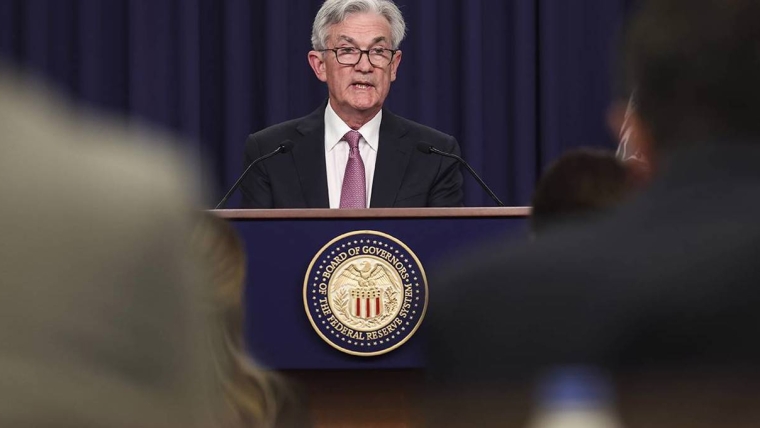
George Santayana famously observed that, “Those who cannot remember the past are condemned to repeat it.” But allow me to offer a corollary: Those who misremember the past may be led into error by misreading history.
Case in point: Many observers of the US Federal Reserve’s current policy predicament – which is similar to the predicament facing other central banks around the world – have drawn parallels to the problems that Chair Paul Volcker and the Fed faced in the early 1980s. The implication (if you buy the parallel) is that bringing inflation to heel will require much higher interest rates, a lot of pain, and probably a deep recession.
To be sure, parallels do exist. US inflation over the last 18 months or so has been the highest since the Volcker era. The public has been greatly distressed by rising prices, as it was back then, making inflation the number one economic problem. And, as in the 1970s and early 1980s, the economy has been buffeted by a series of adverse supply shocks to food and energy prices. But comparing current Fed Chair Jerome Powell’s task to Volcker’s reveals that the differences are greater than the similarities – and all of them make Powell’s job relatively easier.
Let’s start with an obvious but much-ignored fact. Today’s inflation problem in the US is relatively recent, dating only from the spring of 2021. In February 2021, the 12-month CPI inflation rate was still a mere 1.7%, but by that May it had reached 5%. In contrast, when Volcker took the reins at the Fed in August 1979, the US had already experienced nearly 15 years of high inflation. As he settled into his new office, the headline inflation rate was a stunning 11.8%, having been above 5% since April 1973 and over 8% since September 1978. High inflation had become deeply ingrained in Americans’ business plans and popular psychology. Surveys showed that people expected 8-10% inflation to persist for years.
That brings us to the second big difference. Inflation expectations today are remarkably well contained. In fact, they are nearly consistent with the Fed’s 2% inflation target for the Personal Consumption Expenditures Price Index (PCE). Of course, expected inflation is higher than 2% in the near term, because people can see that inflation is running higher right now. But over a five- or ten-year horizon, the numbers cluster in the 2-3% range.
This matters a lot, because inflation expectations tend to become embedded in wage settlements, interest rates, and household and business plans. Once they rise to high levels, as they had for Volcker in 1979, it can be hard to bring them down. At least for now, Powell doesn’t face that problem.
Third, consider the different macroeconomic conditions under which Powell and Volcker embarked on their disinflation campaigns. In August 1979, at the start of Volcker’s tenure, the US unemployment rate was 6%. That wasn’t so bad, perhaps; but by May 1980, after the short but sharp recession of 1980, it was up to 7.5%.
The Fed under Powell came late to the fight against inflation, for which it has been justifiably criticised. But when it finally started raising interest rates, in March 2022, the unemployment rate was at a historic low of 3.6%, and recent rates of payroll job creation were above 500,000 per month. To put that last number in perspective, the number of new jobs needed to hold the unemployment rate steady is probably around 75,000-100,000 per month. That means the US had a tight and booming labour market in March 2022 – and still does.
It also means that tightening monetary policy today can drive monthly job creation rates all the way down to the 0-100,000 range, and the unemployment rate up to 4.5% or so, without causing terrible hardship. If the Fed can achieve that outcome (which will, admittedly, require both skill and luck), observers will declare that Powell and his colleagues have achieved an economic soft landing. Volcker was afforded no such luxury.
Finally, we must mention the most glaring difference of all. The Volcker disinflation effort chopped nine or ten points off the peak CPI inflation rate (depending on whether you measure it by core or headline inflation), whereas Powell’s Fed is focused on core PCE inflation, which peaked at 5.4% last February-March. Today’s Fed wants to drive that number down to 2% – a drop of “only” 3.4 percentage points. That’s no trivial task, but it’s a much lighter lift than the Volcker Fed had. Furthermore, today’s Fed is already getting some help from the supply side, as disruptions to supply chains ease.
For all these and other reasons, Volcker and his colleagues never gave a moment’s thought to engineering a soft landing. It simply was not in the realm of the possible. Powell and his colleagues are dreaming about a soft landing every night.
Alan S. Blinder, Professor of Economics and Public Affairs at Princeton University, is a former vice chairman of the US Federal Reserve Board (1994-96). This commentary is drawn from the author’s new book, A Monetary and Fiscal History of the United States, 1961-2021 (Princeton University Press, 2022). This content is © Project Syndicate, 2022, and is here with permission.
16 Comments
No mention of WHY there has to be inflation. It's a question I have asked before. I suspect the Fed fiddling with macro economic tools in an attempt to 'manage' inflation is at best a clumsy solution and at worst a disaster waiting to happen.
Fiat currency without any asset backing by design must be inflationary otherwise the entire system will collapse on itself as a ponzi scheme.
The US has to mint new to USD to pay previous debts, they borrow to repay a bigger pile of debt overtime.
I suggest you're promoting a myth created by the crypto pundits. Fiat currencies issued by Governments are backed by all the economic assets of their economies. Thus we're back to the original question; assuming the supply/access to resources is stable, why must there be inflation?
Inflation is difficult to measure precisely, and it is better to aim for low inflation in order to avoid deflation. With deflation, your money becomes more valuable, much like Bitcoin or any finite commodity, so you are disincentivised to use your money as a means of exchange, defeating the purpose of a currency, and causing a slowdown in people buying and selling actual goods and services in the economy, which leads to an economic downturn.
ps the currency is not issued by the government. Don't believe the crypto conspiracy theorists.
"the currency is not issued by the government" ???
I know you will say the Central bank issues it, but the central banks, despite being 'Independent' work for the government as much as any other government organisation. The pragmatic reality would say that the RB acts on behalf of the Government. (Who appointed Orr to the RBNZ, and will appoint his replacement?) The US Fed pretty much works in lockstep with the Government there, so for intents they represent the Government in managing the amount of currency in the economy. Are there any examples where for example a country's central bank had printed excess money against a government's wishes or refused to add currency when a government has required it?
Yes the govt can change the mandate, like this silly govt has done by making the RB consider employment as well as inflation, but that becomes the RB's sole goal. You need to expand on what you mean exactly by the government 'requiring it'. This requires exact language, because it is too easy to use vague language to hint at conspiracy.
If you think central banks are "independent", who authorises their power? The govt. Through legislative enactment. In the case of NZ, who appoints the governor? The idea that central banks are independent is a myth. No conspiracy.
Um. Refer to previous comment I suppose. No further information gathered.
Most of the effective liquidity ,in this" residential housing + a few tack- on's" economy ,is monetary credit creation ,by trading banks for mortgages,in New Zealand,that is the predominant source of new money in circulation. Anyway,as proponents of Prof. Werner ,have detailed to readers , here.
Bingo
This is one of the confusing parts of the economy; credit v money. I would suggest banks only issue 'credit' which is too all extents a bet on future economic activity. However, very quickly it must change to be measured in 'money', as that credit is used to settle a purchase. So an important part of this debate is the banks role in this. Not so long ago i figured the banks were only issuing credit, but I now realise that as soon as that credit get used to buy something, it must then convert to money (because that is what it becomes for the seller). But to the borrower it remains a credit balance that must be paid back, hence the bet against future economic activity.
And this then narrows in on the significant problem for governments. Should banks be regulated as to how, when, and especially how much credit they can issue? It is easy to see these days, just how much damage unregulated lending can do, creating a highly unbalanced economy that threatens a country's stability. Add another question; should the banks have balanced limits to ensure they lend into commercial (non-social accommodation provision) in a balanced way that will support employment, manufacturing, export etc?
it only takes trading in large scale assets with an alternative to the NZD to cause issues.
You clearly are out of touch with anyone under 25 that feels something is seriously broken with how things work and are going.
Boomer property ponzi won't sustain for more than 2 more decades.
Not sure who you've aimed this comment at?
But it's not a "BOOMER" property ponzi. It's a screw up by the government kowtowing to big money, especially the banks! And don't worry there are an awful lot of people over 25 who KNOW something is broken, but are powerless to fix it. Look at the policies on offer by any of the political parties. Look at them critically. There are NO effective solutions being offered or discussed, especially taxes (which is a REALLY dangerous one).
That is why I am asking the questions above. I believe this is about effective government regulation, but getting cogent discussion is difficult.
How can any economist discuss the differences in inflation events without any reference to the current supply shocks from covid and Ukraine invasion and climate change enhanced weather events, or to corporate price gouging?
It is easy though for such economists to opine on deliberately increasing unemployment as a mere nothing.

We welcome your comments below. If you are not already registered, please register to comment
Remember we welcome robust, respectful and insightful debate. We don't welcome abusive or defamatory comments and will de-register those repeatedly making such comments. Our current comment policy is here.